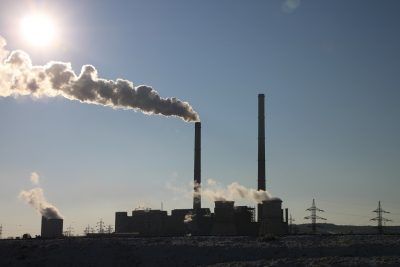Cement giant Aalborg Portland is Italian-owned. An Irish company owns Holmegaard’s glass factory. Four brickworks in Southern Jylland, Fyn, Helsinge and Thy have been acquired by the Austrian group Wienerberger.
What’s the red thread between these companies? Huge CO2 emissions – amongst the largest in Denmark. But they are no anomalies.
Some 62 percent of the industry’s CO2 pollution in Denmark comes from foreign-owned companies whose emissions are covered by free EU quotas, according to a DR report using figures from the EU Commission and the Danish Energy Agency.
For one the EU’s most climate-conscious countries, it’s a stain on the green agenda. So what’s Denmark’s move?
Achilles Heel for Danish climate goals
The government is under pressure to raise the tax on CO2 emissions. Konservative, Venstre and Radikale, as well as the Climate Council and the Economic Council, have voiced concerns that private companies are getting away with polluting at little cost.
Jakob Roland Munch, an economics professor at the University of Copenhagen, supports the proposal – but predicts that it may harm business interests.
“For foreign-owned companies, it will probably be easier to move their production out of Denmark if a higher CO2 tax is introduced,” he said.
Henrik Dietrichsen is the managing director of Egernsund Wienerberger’s branch in the Nordic region. Wienerberger is one of Denmark’s biggest polluters, producing 37,000 tonnes of CO2 last year.
Dietrichsen echoed Munch’s concerns about the future viability of operating in Denmark under heavier taxation. “If there is a CO2 tax in Denmark, as proposed, and not in other countries, then of course it will have consequences for jobs.”
“The polluter should pay”
In the autumn, an expert group will present the first proposal on a green tax reform to raise the CO2 tax in Denmark and cover the industries exempt today.
Today, companies pay 180 kroner per tonne of CO2 – but the largest CO2 emitters like Wienerberger are exempt from Danish CO2 tax. The proposed increase will see a tonne of greenhouse gas cost 1,500 kroner.
“The polluter should pay. That is the principle we believe is healthy,” said Munch.
The tax minister, Morten Bødskov – though supportive of the increase – has been coy about hard figures. “How much exactly the increase will be is a question we have left to an expert group,” he said.
Subsidies for green alternatives
Meanwhile, 6 billion kroner has been set aside to support the companies’ green transition, should they choose to go green rather than go home.
“We want to help the industry get on the green track and avoid being taxed as a result of too many CO2 emissions,” said Bødskov.
Several of Denmark’s neighbours, such as Germany, Sweden and Norway, have already introduced a higher tax on CO2 or plan to do so.
While Denmark’s current tax-per-tonne is 180 kroner, Germany’s is 450 and Sweden’s 85, while Norway has raised tax to 1,500, according to Mikael Skou Andersen of Aarhus University.
For once it seems like it is time for Denmark to follow suit rather than lead the charge on the climate agenda.
“It will be easier to introduce a higher CO2 tax in Denmark when other countries are doing the same. We will not have to worry so much about production moving out,” assured Munch.














